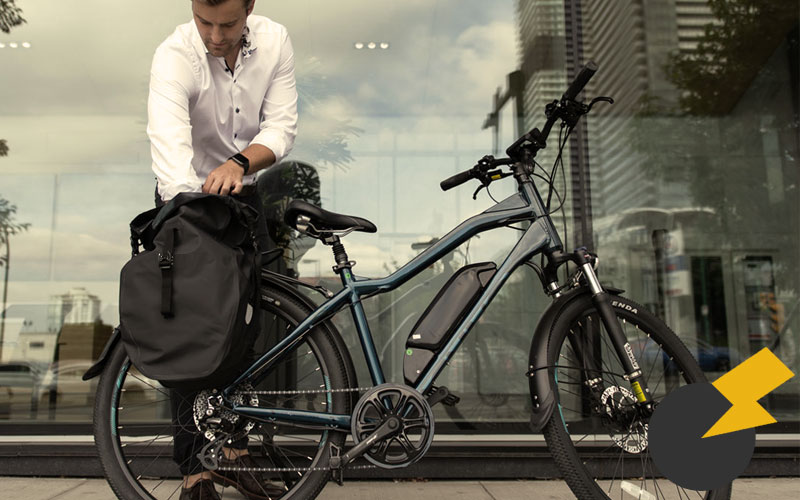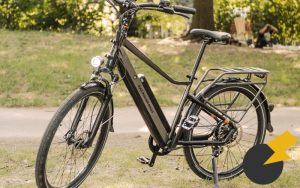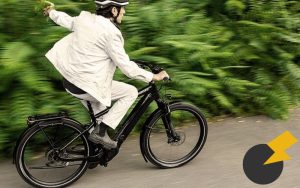Imagine this: you’re cruising along a mountain pathway with the blowing wind in your hair and the sunrays on your face. You’re not pedaling as vigorously as you usually would, and yet you’re still moving fast. How is this achievable, you ask? It’s all because of the magic of e-bikes!
Or envision this: it’s Monday morning in Pickering, and you’re running late for work. You’re dreading the very long travel ahead of you, however then you recall your trusty e-bike. With a grin on your face, you hop on and depart, leaving the stress of gridlock traffic behind.
E-bikes take after standard bicycles, but with a supercharged secret weapon: an electric powered engine. This means you can tackle steep hills, headwinds, and cross countries with ease, without breaking a sweat (unless, naturally, you wish to). You can go further, speedier, and explore more places than you ever could on a typical bike.
Don’t let the electric motor unit fool you – riding an e-bike is still an experience. You’ll feel the wind rushing by as you zip along, and you’ll still get a great workout if you like one. Plus, you’ll be doing your part for the environment by going for a form of transportation that doesn’t depend on fossil fuels.
Regardless if you’re seeking to explore fresh trails, commute to work without breaking a sweat, or just enjoy the freedom of 2 wheels, an e-bike is an electrifying and bold way to do it. Hop on and let the electric powered motor take you on a ride you’ll never forget!
Best E-Bikes in Pickering

As North America's largest electric bike brand, Rad Power Bikes is constantly redefining the way people and goods move with a dedicated team that designs e-bikes that can be used for anything and are affordable.
Save Big On These Limited Time Offers

Although Pedego believes in excellence and quality (a belief backed up by the manufacture of high-quality bikes), they place a much higher premium on people. With Pedego, you have a company that stands for you!

Biktrix is devoted to manufacturing electric bicycles that are affordable yet exhibit high performance. Bikes that are more convenient, more efficient and more affordable option.
What Is An E-Bike?

Types Of E-Bikes Frame Designs
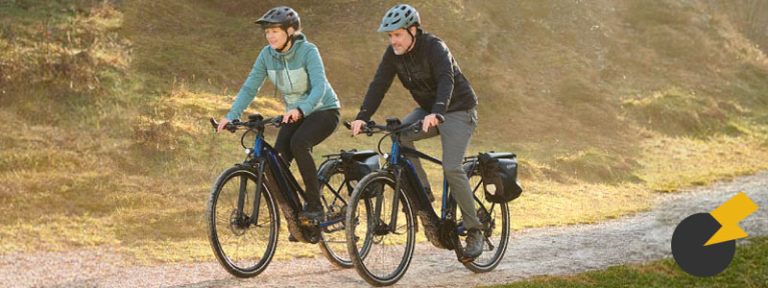
E-bikes are available in lots of sizes and shapes, with frame design being a significant factor in comfort, stability, speed, and handling. The most typical e-bike frame designs consist of step-through, step-over, mixte, folding, cruiser, and cargo frames.
Each type accommodates various riding styles and choices, making e-bikes a flexible mode of transportation. Whether you’re looking for a comfy, kicked back trip or a sporty, performance-oriented unit, there’s an e-bike frame design that’s perfect for you.
- Step-through frame: As the name suggests, this frame has a low or angled top tube, making it easy for riders to step through and mount the bike without having to swing their leg over the frame. This design is popular among riders who want a more comfortable, relaxed riding position or who have mobility issues.
- Step-over frame: This is the traditional bicycle frame design, with a high top tube that requires the rider to swing their leg over to mount the bike. This design is popular among road cyclists and riders who prefer a more aggressive, sporty riding position.
- Mixte frame: This is a variation of the step-through frame, with a partial top tube that extends diagonally from the head tube to the seat tube. This design provides additional support and stability while still allowing for easy mounting.
Folding frame: This frame is designed to be compact and portable, with features like smaller wheels and a frame that can be folded up for storage or transportation. Folding frames are a great option for commuters or riders with limited storage space. - Cruiser frame: This frame has a relaxed, comfortable riding position with wide handlebars, a plush saddle, and a laid-back geometry. This design is popular among riders who prioritize comfort and style over speed and performance.
Fat tire frame: This frame is designed for off-road riding, with extra-wide tires and a sturdy frame to support the weight of the rider and provide greater stability on loose surfaces such as sand or snow. - Cargo frame: This frame is designed to carry heavy loads, with a longer wheelbase and a sturdy frame to support the weight of cargo or gear. This design is popular among commuters and delivery riders who need to carry items with them on their bike.
These are just a several examples of e-bike frame designs, and there are several variations and combinations of these styles. Selecting the right frame design will be dependent on your personal riding style, needs, and choices.
Who Can Use An E-Bike?
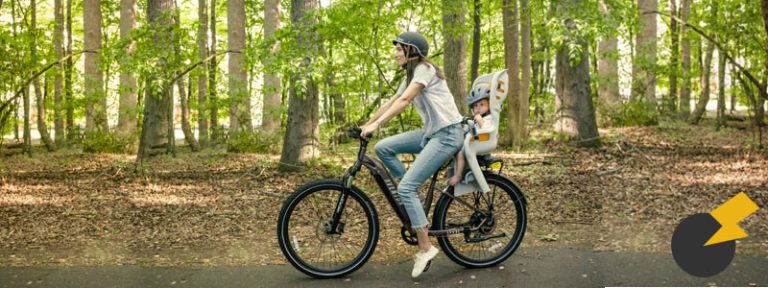
In general, anyone who can ride a traditional bicycle can utilize an ebike. Nevertheless, the particular rules and regulations governing using ebikes vary by country and even by state or province within countries.
In a lot of places, there are no age restrictions for riding an ebike, although some jurisdictions might have specific age limits for certain kinds of ebikes, such as those with higher speeds or more powerful motors. In addition, numerous nations require making use of helmets while riding an ebike, and some jurisdictions may likewise require a legitimate driver’s license or permit.
It’s important to research and understand the specific rules and policies in your area before purchasing or using an ebike. Additionally, it’s always a great idea to wear protective gear such as a helmet and follow safe riding practices, including following traffic laws and utilizing appropriate signs when turning or stopping.
E-bikes can be used for a range of purposes, consisting of:
Commuting: E-bikes are an excellent option for commuting to work or school, providing a quicker, much easier, and more eco-friendly method to get around. They can help riders prevent traffic congestion, lower transport expenses, and enhance general health and well-being.
Recreation: E-bikes are an enjoyable and exciting method to explore the outdoors, whether it’s travelling along beautiful routes or taking on tough mountain terrain. They can assist riders cover more ground and reach new places that may have been out of range with a regular bike.
Exercise: E-bikes can offer a low-impact, cardiovascular exercise that’s easy on the joints and ideal for riders of all ages and fitness levels. They can help riders enhance their general fitness and health, and can be utilized for both leisurely rides and more extreme exercises.
Errands and shopping: E-bikes are a practical way to run errands and do shopping, offering a way to bring groceries, supplies, and other items without the need for an automobile. They can also help in reducing traffic congestion and improve air quality in urban areas.
Tourism: E-bikes are a popular choice for tourists who want to explore a new city or town at their own speed. They can offer a distinct and immersive way to experience regional sights and attractions, without the need for a car or public transit.
In general, e-bikes are a flexible and practical mode of transport that can be utilized for a wide variety of functions, making them a great investment for anybody searching for an enjoyable, environmentally friendly, and efficient way to get around.
Classes Of E-Bikes In Canada
In Canada, there are three classes of ebikes, which are defined by the federal government:
Class 1 e-bikes
Class 1 e-bikes are pedal-assisted electric bicycles that can provide assistance up to a maximum speed of 32 km/h. They do not have a throttle, and the motor only operates while the rider is pedaling. Class 1 e-bikes are treated as bicycles under Canadian law and are permitted to use bike lanes and other cycling infrastructure.
Class 2 e-bikes
Class 2 e-bikes are also known as throttle-assisted e-bikes, as they can be propelled by a motor using a throttle without pedaling. They are also capable of being pedaled like a traditional bicycle. Class 2 e-bikes can provide assistance up to a maximum speed of 32 km/h. Like Class 1 e-bikes, they are treated as bicycles under Canadian law and are permitted to use bike lanes and other cycling infrastructure.
Class 3 e-bikes
Class 3 e-bikes are similar to Class 1 e-bikes in that they are pedal-assisted and can provide assistance up to a maximum speed of 32 km/h. However, Class 3 e-bikes are equipped with a motor that can provide assistance even at speeds above 32 km/h, up to a maximum speed of 45 km/h. As a result, they are not permitted on bike paths or other cycling infrastructure that is designated for bicycles only. Riders of Class 3 e-bikes must be at least 16 years of age, wear a helmet, and follow the same rules of the road as motor vehicles.
Each province or territory may have their own rules and regulations regarding e-bikes, so it’s always a good idea to check with your local authorities to ensure that you are following the most up-to-date regulations.
Electric Bike Financing In Canada
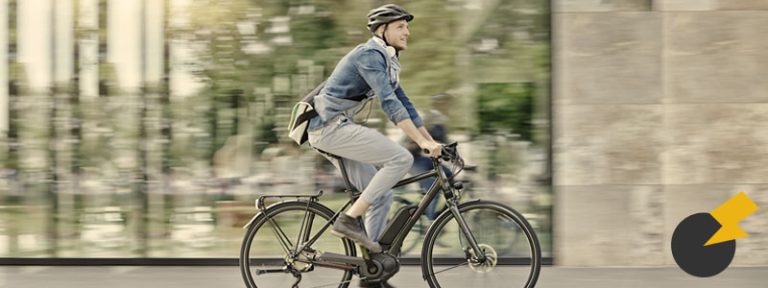
There are a few opportunities for financing an e-bike in Pickering, Canada, suching as:
- Manufacturer Financing In Canada
Some e-bike manufacturers provide financing options through partnerships with financing organizations. These financing options can vary, so it’s important to talk to the particular company for details. - Bike Company Financing:
Various bicycle stores provide financing choices for e-bikes, either through partnerships with funding business or through in-house financing. These choices can vary, so it is essential to check with the particular purchase information. - Personal Loans
It’s also possible to fund an e-bike through a personal loan from a bank or other financial institution. These loans can be used to acquire an e-bike, and the conditions can vary depending upon the lending institution. - Credit Cards
Some credit cards use financing possibilities for large purchases, including e-bikes. These options can vary, so it is crucial to contact the specific credit card company for information.
Before funding an e-bike, it is necessary to think about the rate of interest, repayment terms, and any extra costs associated with the financing option. It’s also essential to make sure that the e-bike being acquired is a great suitable for the rider’s needs and finances.
FAQ
Yes, e-bikes in Pickering, Canada are a great option for commuting, as they are efficient, cost-effective, and environmentally-friendly. Many cities in Canada have bike lanes and other infrastructure to support commuting by e-bike, and some employers offer incentives or amenities for employees who bike to work.
Explore

As North America’s largest electric bike brand, Rad Power Bikes is constantly redefining the way people and goods move with a dedicated team that designs e-bikes that can be used for anything and are affordable.
Save Big On These Limited Time Offers
-
Thousands of new e–bikes, smart docks and digital ads: Bike Share Toronto lays out 5 -year plan
Source: e-bike ontario Published on 2025-12-13
-
Thousands of new e–bikes, smart docks and digital ads: Bike Share Toronto lays out 5 -year plan
Source: e-bike ontario Published on 2025-12-12
-
Toronto police could get more power to seize e–bikes, e-scooters – TorontoToday.ca
Source: e-bike ontario Published on 2025-12-12
-
Cold snap in Ontario this weekend, wind gusts up to 50 km/h – Mississauga News
Source: e-bike ontario Published on 2025-12-12
-
onpoli, a TVO podcast Another lump of coal for Doug Ford
Source: e-bike ontario Published on 2025-12-12
-
Meet Vancouver’s most-travelled shared bicycle in the Mobi network – MSN
Source: e-bike ontario Published on 2025-12-10
-
ANALYSIS: I love my e–bike. But Ontario needs new rules | TVO Today
Source: e-bike ontario Published on 2025-12-09
-
Councillors raise issues with e-scooter, e–bike program – Mississauga News
Source: e-bike ontario Published on 2025-12-07
-
Halifax to pause e-scooter, e–bike program until the spring – CTV News
Source: e-bike ontario Published on 2025-12-05
-
Dangers caused by e-scooter riders a growing concern in Mississauga; it’s like the ‘Wild West’
Source: e-bike ontario Published on 2025-12-03
-
E-scoot over: Bracebridge ready to fine riders on municipal sidewalks
Source: e-bike ontario Published on 2025-12-03
-
Bending Spoons Acquires Eventbrite for $500M to Revitalize Brand
Source: e-bike ontario Published on 2025-12-03
-
Fire in Norfolk County e–bike shop displaces residents, pets – The Hamilton Spectator
Source: e-bike ontario Published on 2025-12-02
-
Waterloo considering its biggest tax hike + Hacksmith creates multi-tool to be built in … – The Record
Source: e-bike ontario Published on 2025-12-01
-
Cambridge Times today: E–bike battery fire in homeless shelter + New food truck venture for …
Source: e-bike ontario Published on 2025-12-01
